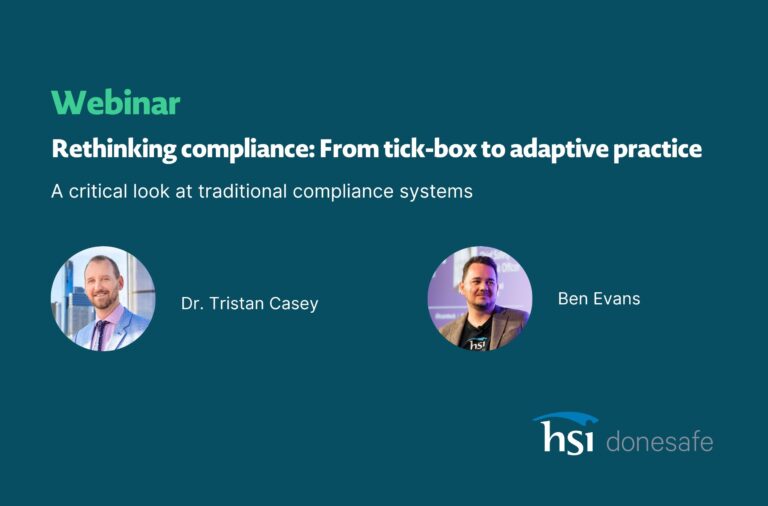
Creating cultural change towards workplace health and safety is one of the biggest trending topics in
the safety community this year. But creating cultural change is not something that can be achieved
overnight. The good news is that there are some clear ‘rules of thumb’ that if followed, give you
every chance of achieving a strong culture of safety within your organization.
Changing culture starts with changing behavior … One need not be an expert on employee health
and safety to realize that there is a link between a company’s safety culture, employee morale, and
behavior.
What many don’t realize is that the adoption of EHS software can play a significant role in improving
employee morale and behavior. Now, of course, there are many ways to strengthen organizational
culture and motivate employees.
What makes EHS software such a worthwhile investment?
First of all, EHS software allows companies to put forth a zero-harm policy in both words and actions.
While many companies tout the importance of zero-harm policies, converting to a software EHS
solution brings this goal much closer to reality. Organizations should never underestimate how much
investing directly into employees’ safety helps boost morale as well as work ethic, including the
behaviors that directly contribute to a zero-incident culture.
The decision to adopt EHS software supports a comprehensive health and safety management
strategy transmitted from the top down. Making the switch to a software-based solution sends the
message that the organization not only prioritizes safety in name but that it is willing to financially
invest in that commitment.
Of course, one of the main reasons companies invest in EHS software is return on investment. Since
the adoption of EHS software helps prevent injuries and reduce risk, that alone can help the
organization save money on workers compensation claims. However, the upfront investment in EHS
software also tells employees that management and ownership are serious about employee health
and safety. If EHS adoption is part of a broad cultural shift on safety, this attitude can quickly spread
through the ranks, changing behavior, and even boosting employee morale. How might this happen?
The key is in the multitude of features and levels of integration that EHS software supports—
especially when compared with manual methods of EHS management.
How to embed EHS software into the work culture
Beyond incident prevention, EHS software helps create an environment where safety is baked into
the company culture and employee conduct. Making the transition from manual to electronic
reporting can be the catalyst for cultural and behavioral change. On a basic level, the training
required to transition from a manual system to EHS software gives an opportunity to renew and
outline expectations for reporting and accountability. Ideally, employees should be encouraged to
interact with the system, while management should solicit feedback and input from employees in
order to improve tracking and reporting. This includes all personnel in this cycle, making employees
feel empowered and included in the safety culture of the organization.
The switch to EHS software brings about several changes, the most striking of which is the speed of
communication and reporting. As employees and managers get used to quickly accessing
information, they also learn to expect real-time or relatively swift updates and feedback. The
improved efficiency of communication can have positive impacts on productivity and could help
reduce response time in emergencies or cases that require immediate attention. With this change,
workers at all levels of the organization come to expect a streamlined, efficient method of
communication. As a result, EHS software fosters employee engagement to help transform both the
overall culture of expectations for safety and reporting, as well as individual-level behaviors.
The cultural and behavioral switch
EHS software also contributes to cultural and behavioral change by concentrating on all important
safety metrics under the same umbrella. Unlike manual health and safety management, where it
may have been difficult to centralize dispersed data and metrics, EHS software depends on
integrating a variety of discrete factors. These include occupational health and safety, near-miss
reporting, injury prevention, environmental impacts, audit management, and many more. Such a
platform shows workers the interconnectedness of seemingly unrelated processes and helps them
see the impact of their own behavior. An integrated platform also increases employee engagement
with reporting tools and improves communication between supervisors and employees. Ease of
reporting, visibility and sharing can clarify the relationship between behaviors and outcomes.
Meanwhile, the sum of small behaviors can create positive cultural change throughout the company.
Empower the workforce
EHS software also democratizes access to the EHS infrastructure for employees throughout the
organizational hierarchy. Widespread access, combined with speed of input and response,
encourages employees to report more data, more frequently than they would before. In this case,
the simple fact of having access to key indicators and reporting measures can incite cultural and
behavioral change. Employees get the sense that their input is a valuable piece of the EHS
infrastructure and that every individual action can help improve the whole. For instance, one of the
most crucial features of EHS software is rapid and streamlined near-miss reporting. Instilling a
culture where near-miss reporting is both expected and simple to accomplish means that issues of
concern are instantly flagged for follow-up. This is one of the most important features of EHS
software, because of its direct link to tangible safety improvements. The cultural and behavioral
changes brought about by better reporting and follow-up can contribute to a safer workplace for
every single employee.
Last but not least, EHS software can also help support accountability and improve relations between
supervisors and employees. The best software options feature audit management tools that
integrate tracking and reporting with regular audit and compliance checks. This impacts company
culture by giving upper management the tools to follow through and ensure compliance. It creates
behavioral change through the expectation that each employee has a role in accountability and
identifying concerns that may result in audits or non-compliance. EHS software can also help take
the confusion out of regulatory compliance and help companies stay on top of every new regulatory
change. For each regulation, EHS software streamlines the tracking of every process that this
regulation affects. Tracking for regulatory purposes highlights the importance of compliance,
creating a culture where every aspect of compliance is both significant and integrated into a larger
whole.
Share:



